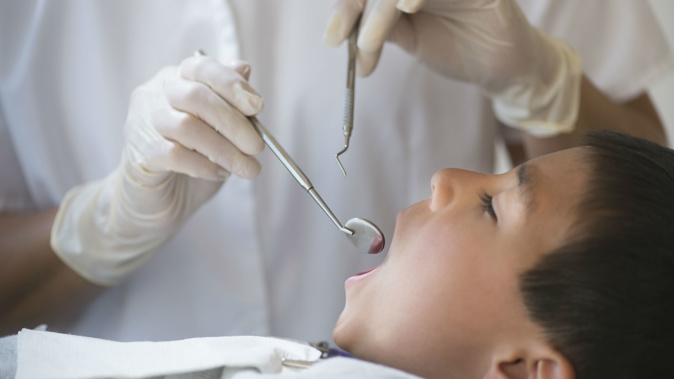
The waiting list for young people needing dental surgeries has been stuck stubbornly at around 4000 for the past year, as dentists feel "unable" to make a dent.
Te Whatu Ora data released to Newstalk ZB shows as of the end of March, there were 4001 referrals on the waiting list for children aged 14 and under.
In April 2022, that figure sat at 3949, and got as high as 4134 at the end of January this year.
Dental Association Chief Executive Mo Amso says they've seen this trend grow over a number of years, and it's a complex problem underpinned by three key reasons.
Firstly, we are not doing well at preventing dental disease.
He says we are seeing a large number of children accessing a lot of sugary food and drinks, which is increasing the amount of disease.
"We are getting more and more children having more and more complex and advanced dental disease than we have ever done in history."
He says secondly, there's access to care challenges.
"We are not able to treat the children as promptly as we would have been able to do so, say ten years ago. Our healthcare system has not continued to expand to match up with the growth in our population rates in the last five to 10 years."
Amso says during Covid lockdowns, there was delayed access to care for some children who would have been treated conservatively in the community. He says instead, they eventually ended up with worsening disease and have needed more complex and advanced dental care in a hospital setting under general anaesthetic.
"Unfortunately, these numbers are increasing at such a rapid rate that it is becoming absolutely impossible to make a dent in without any significant intervention at a policy and Government level."
Te Whatu Ora data shows the number of dental surgeries carried out in March was 823. That figure has fluctuated between 499 in April 2022 and 852 in September 2022.
Amso says delayed access to care also has "significant long term ramifications".
He says for example, an abscess in a child's mouth that goes untreated for prolonged periods of time not only causes them pain and impacts their eating and social behaviour, it also impacts the developing permanent teeth that are growing underneath.
Amso says the third issues is workforce numbers, as they have also failed to keep up with increases in population.
"We're more or less training the same number of people, for the same number of jobs.
"The growth rate in those jobs and training positions has not increased significantly in the last decade."
He says every year we generate half the workforce here, and rely on the other half coming from overseas.
Amso says the closed borders "significantly impacted" the number of healthcare workers in the oral sector, and we're seeing the results today.
A number of oral health jobs were added to the Green List Straight to Residence pathway earlier this year.
But Amso thinks it was a bit too little too late.
"It was good to be recognised as a workforce under pressure, but unfortunately there's a global demand for the oral health workforce and we are not attracting any significant numbers from overseas."
"Our members, dentists and dental specialists, will continue to turn up to work every day frustrated, disheartened and somewhat disengaged, because they feel absolutely unable to tackle those ever-increasing waitlists for children to access general anaesthetic treatment."
He says the national strategic vision for oral health is almost 20 years old, and needs to be looked at.
"The Government must review its strategy for oral health and set a plan for some short, medium, and long-term action - significantly focusing on the prevention of disease, treating disease and investing in the workforce that will carry out the oral health care prevention and treatment."
Take your Radio, Podcasts and Music with you









